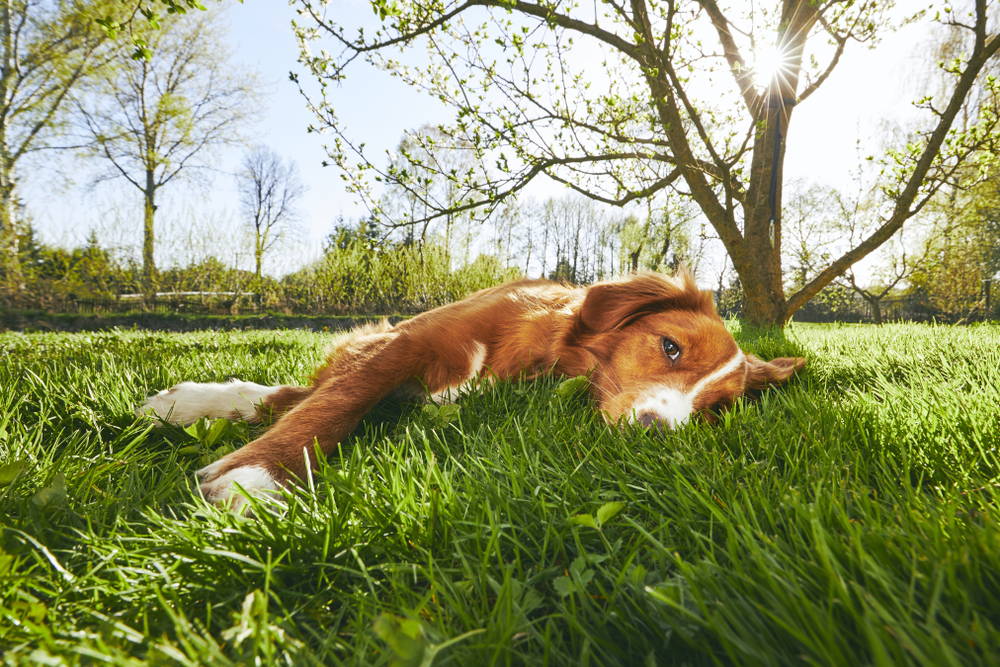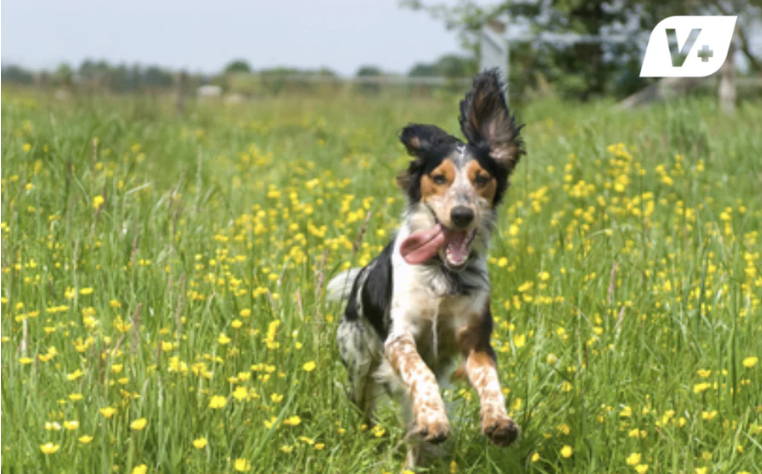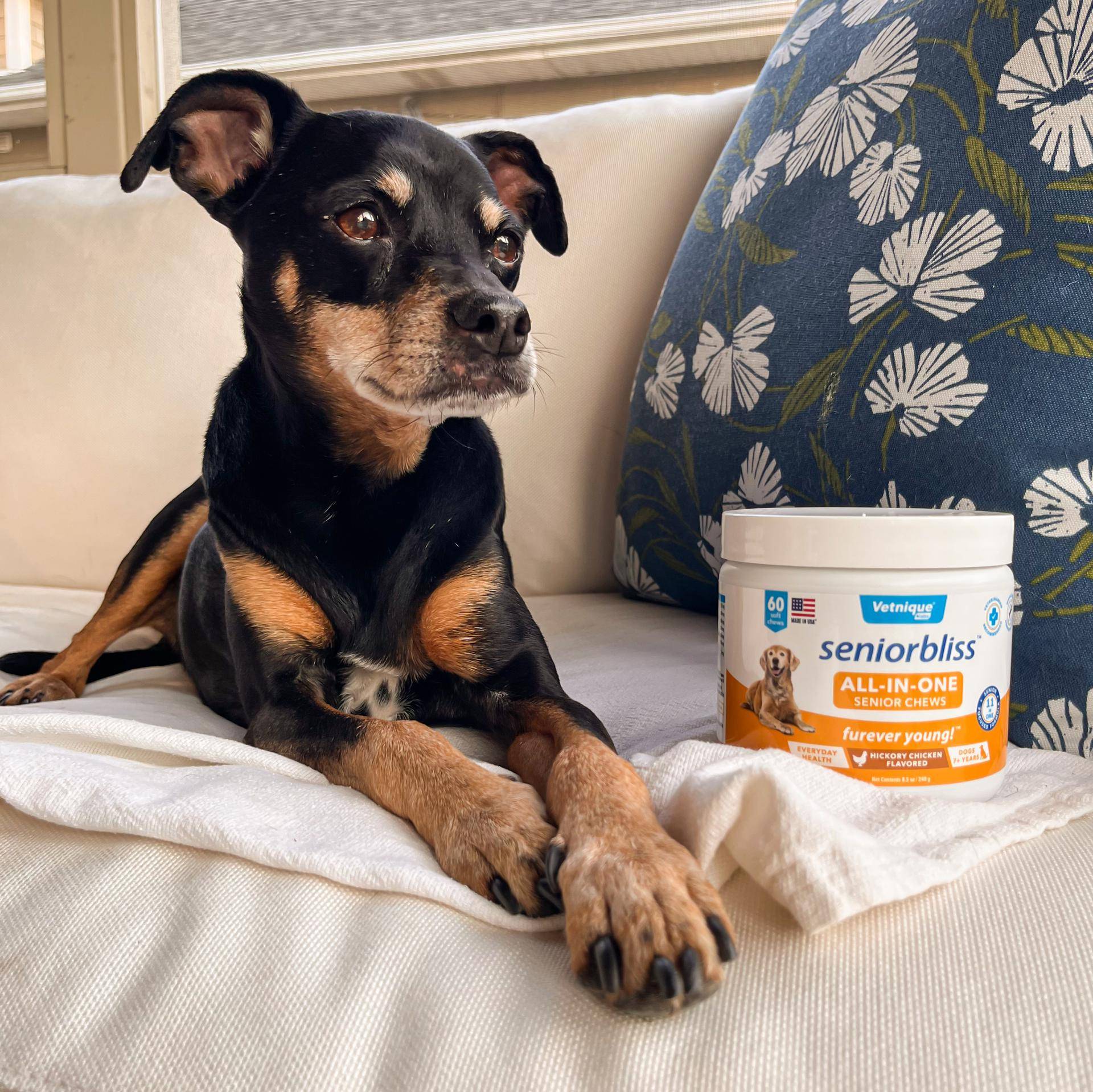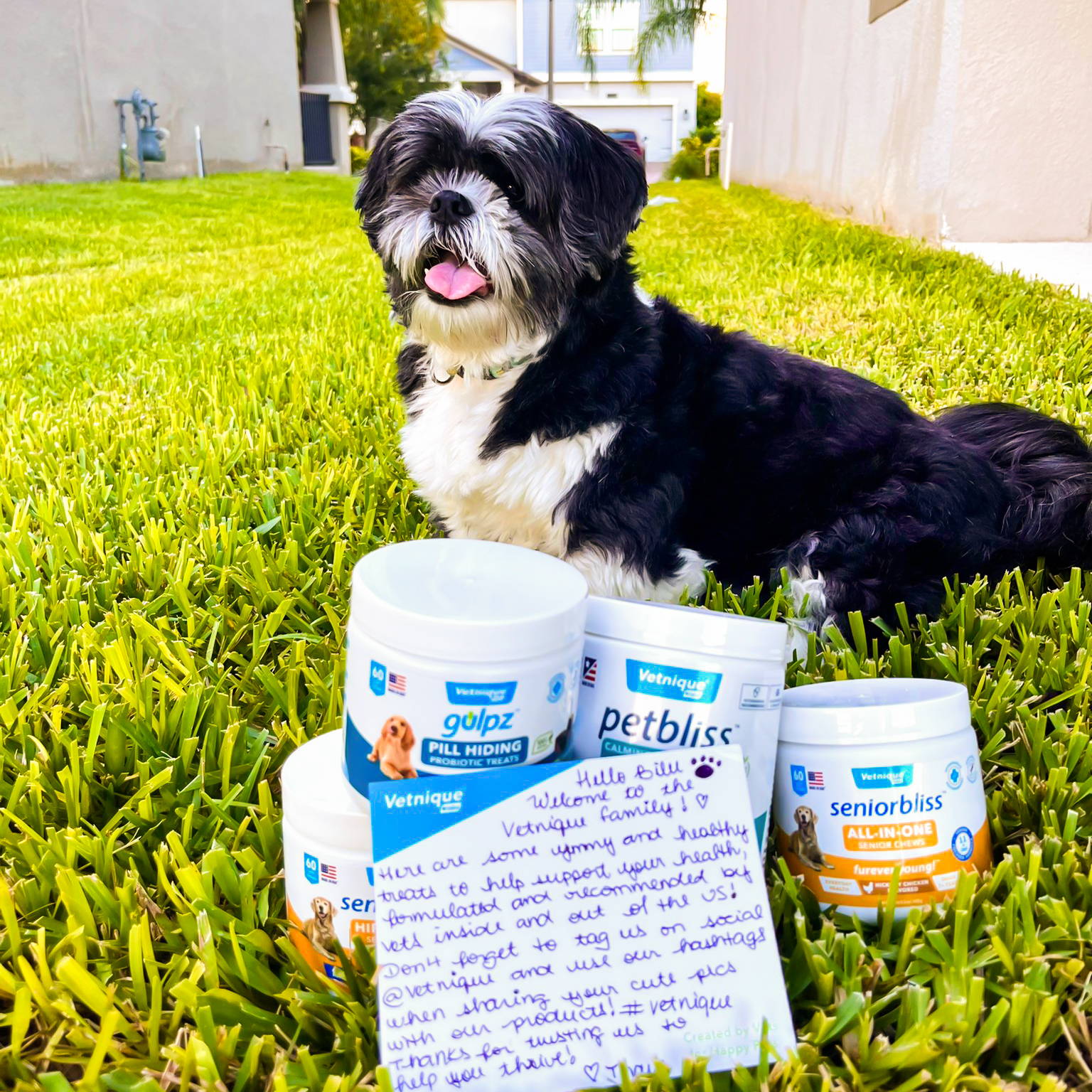Spring seasonal allergy treatmentS for dogs
Jump to Section

‘Tis the season to tame itchy allergies! We’ve covered the basics of spring allergies and what they look like; now it’s time to spotlight the best seasonal allergy treatments for dogs! We’ll explain when to use them and which ones might be right for your pet before covering the top-offending allergens that put the ouch in your dog’s itch!
Effective spring allergy treatments for dogs
Limit allergen exposure
Give a daily dog allergy supplement
One of the best ways to stay ahead of seasonal allergies is to give your dog a once-daily allergy supplement. You don’t need a prescription for dog allergy supplements, but it’s still important to tell your veterinarian which supplements you give your pet during routine checkups.
Dog allergy supplements feature ingredients with natural antihistamine properties like quercetin and bovine colostrum, which can help calm the immune response and combat allergic itching. They also contain high-quality fatty acids which work to reduce inflammation and restore the barrier function of the skin, making it less prone to irritation by allergens and secondary infection.
Try allergy medications for dogs
In more severe cases, an oral anti-itch or dog allergy medication can be a good way to reduce dogs’ allergy symptoms and discomfort. Your veterinarian might prescribe an antihistamine like diphenhydramine (brand name Benadryl®) or cetirizine (brand name Zyrtec®), or an anti-itch medication like oclacitinib (brand name Apoquel®) or Lokivetmab (brand name Cytopoint) for your dog’s allergies. Your veterinarian will help choose the best medication for your pet!
Use topical remedies
Topical dog allergy treatments can include gentle hygiene wipes and anti-itch sprays designed to address the itching and discomfort triggered by seasonal allergies. During the height of allergy season, wipe down your dog’s face and paws after they come inside from playing to remove surface allergens from the skin and fur. Even if your dog isn’t outside for long, you can give itchy areas a spritz with an anti-itch spray for quick relief and to disinfect the skin.
Give dogs a soothing bath
While dog allergy supplements and topical treatments can be a boon for itchy skin, a good old-fashioned bath is the best way to remove irritating allergens from your pet’s skin. Quality shampoos can also restore essential moisture, which is important for improving the protective barrier function of the skin.
The best medicated dog shampoos for skin allergies should include soothing ingredients like aloe vera and oatmeal, with added relief from active ingredients like pramoxine to address pain and itching in inflamed skin.

Signs of seasonal allergies in dogs
Dog seasonal allergy symptoms can pop up quickly and cause your dog lots of discomfort and irritation. The most common areas of skin to show signs of allergic irritation include the muzzle, around the eyes, between the toes, in the armpits, in skin folds, on the abdomen, and around the groin. If your dog has allergies, they might exhibit some or all of the following signs:
- Excessive itching and scratching
- Licking or chewing paws
- Chewing the skin
- Bald patches in the fur
- Areas of skin that appear raw, red, or bloody
- Red, flakey skin in sensitive areas listed above or elsewhere
- Itchy ears
- Itchy, runny eyes
- Chronic ear infections
- Swelling of the face, lips, earflaps, or eyelids
- Sneezing
While seasonal allergies most commonly present as itchy or inflamed skin, different types of allergies can cause a variety of allergic reactions.

Which seasonal allergens are active in spring?
When it comes to dog seasonal allergies, home remedies can be a big help––but which specific allergens is your pet battling? Take a look at these top offenders!
Tree pollen
Different regions of the United States will have different or more prevalent tree pollen allergies than others, but the most common pollen-producing trees include acacia, ash, beech, catalpa, elm, hickory, juniper, mulberry, oak, olive, pecan, sycamore, and walnut. Tree pollens are at their highest in the months of February-May.
Grass pollen
Only a few grasses are responsible for the troublesome allergies we see in spring. The top-offending pollen-producing grasses include Bahia, Bermuda, fescue, Johnson, Kentucky blue, orchard, ragweed, ryegrass, sweet vernal, and Timothy. Grass pollens are at their highest in the months of April-June.
Everyday allergens
In addition to the seasonal allergens that appear in spring, your dog could also face run-of-the-mill allergens that are present year-round. These common allergens include flea and food allergies and should be discussed with your veterinarian whenever they pop up. Everyday allergens such as dust and dander can also make your pet’s allergy symptoms worse.
Now that you know which allergens are present during the spring season, it can help you prepare for your pet’s allergy symptoms every year. Climate change has extended most of the allergy and pollination seasons, meaning your pet’s allergies may not go away any time soon––but with these vet-approved tips, you can make allergy season much more comfortable for your furry friend!
Learn more about seasonal allergies in pets from Dr. Joya Griffin!
Join the Pack!

Sign up for exclusive deals, curated pet tips from veterinarians, and product launches!
Related Articles





















